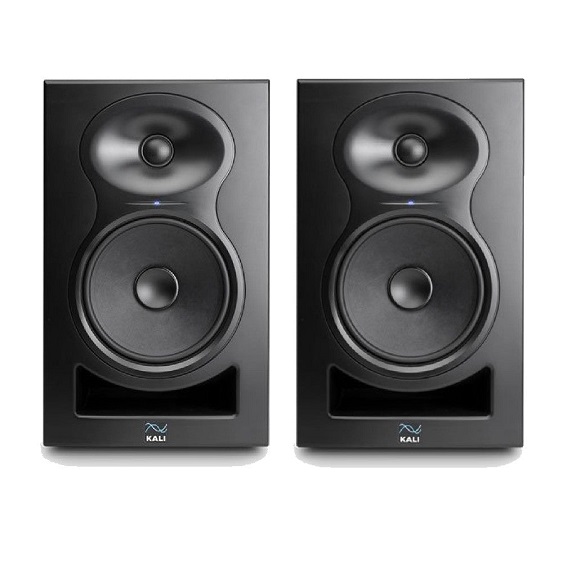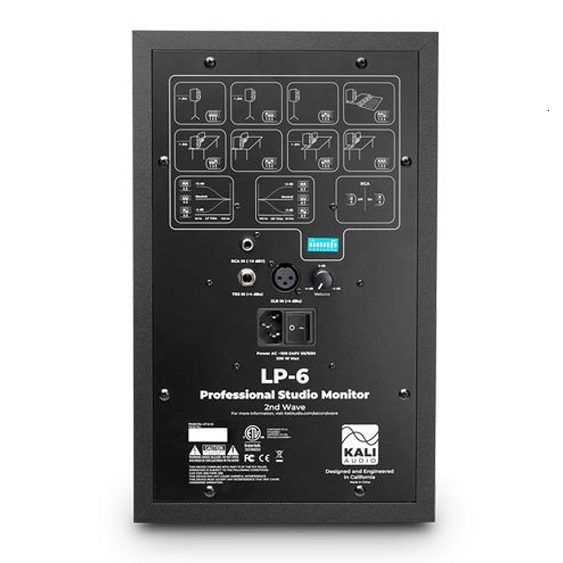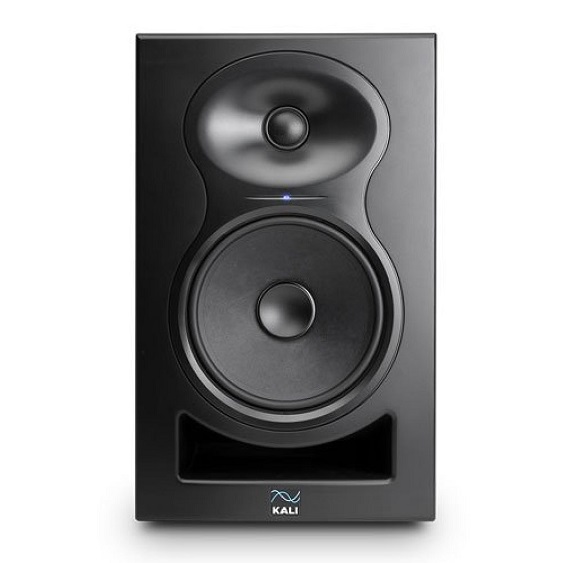Description
Kali Audio LP-6 2nd Wave Lone Pine Series 6.5″ Active Studio Monitor – Pair Overview:
Transparency. Clarity. Accuracy.
Kali Audio’s Lone Pine Series studio monitors are designed to allow you to hear every detail that’s happening in your mix.
This starts with an exceptionally accurate frequency response. Whatever is present on your mix is what you’ll hear in these monitors. Nothing is boosted or suppressed to cover flaws or try to sound more pleasing.
With the LP-6 you can mix with more confidence and you can also be assured that your mix will translate as best as possible to whatever systems your audience is using.
The 2nd Wave goes even further utilizing a more robust DSP for an even flatter frequency response on the top end.
3-D Imaging Waveguide
Hear three dimensional sound from a stereo pair of speakers.
The waveguide on the Lone Pine Series studio monitors ensures that the directivity of the loudspeaker is smooth throughout its frequency response. What’s more: it’s calibrated so that the sound power of the loudspeaker helps you to perceive sound accurately.
In practical terms what this means is that you’re hearing spatial details in the recording that allow your brain to place elements of the recording in the space around you. This gives the speakers a more natural lifelike feel that exposes more of the detail of the material that you’re working on. This level of detail makes it easier to make critical decisions as well as making these monitors pleasurable to mix on and listen to in general.
Dual-Layer Voice Coil
Large diameter voice coil allows for low distortion and high dynamic range.
Low Noise Port Tube
Precisely engineered using airflow simulations for powerful bass without port noise.
We wanted to put a port on the front of the LP-Series studio monitors so that they could be used in small spaces where they’d be placed against walls. At the same time we didn’t want noise from the front port to distract from the accuracy of the speaker so we developed a special front port that doesn’t make noise.
On most port tubes air leaves at different speeds from different points of the opening creating noisy turbulence. This turbulence can be heard as “chuffing ” or an audible air sound coming from the monitor. This sound will add to the noise floor and obscure the details of the low end.
The port tube on LP-6 was designed to ensure that all of the air leaves the port tube at the same velocity. This helps add to the low end response of the speaker while keeping the bass clean tight and devoid of extra noise.
Accuracy
The LPs have always been praised for their accuracy and we’re pleased to share that the 2nd Wave versions realize slight but noticeable improvements in that regard particularly on the top end.
Power
Kali Audio defines a listening distance as the maximum distance at which the speakers can play continuously at 85 dB while maintaining 20 dB dynamic headroom.
This means that anywhere within that listening distance you can listen for long periods of time at reference volume and momentary peaks such as bass drops or explosion effects will come through clearly and with minimal distortion. The LP-6 has enough output for most 1-2 person setups.
Bass on the LP-Series monitors is delivered by larger magnets and larger voice coils than any comparable speakers on the market. This gives you more accurate bass response that extends lower so you can dial in exactly the low end sound you need. Bass response is not boosted or overhyped but you can be sure that you’re hearing the bass that you have on the track.
Protective limiters prevent harmful voltage from ever reaching the drivers so there is no risk of blowing these speakers. These have been updated for the 2nd Wave allowing for 3 dB higher output.
The model use 40W for the 1” soft dome tweeter. The LP-6 uses 40W for the 6.5-Inch woofer.
Boundary EQ Control
A speaker’s given position in a space can drastically change it’s frequency response. A speaker placed against a wall or on a desk will sound very different than a speaker placed on a stand even in a well-treated space. Hard surfaces like walls desk tops and recording consoles can change the low end frequency response of the monitor and degrade the overall clarity of the sound.
Happily most of the common positions are fairly predictable and easily corrected.
Kali’s team did our Boundary EQ tuning at The Village Studios in Los Angeles and came up with boundary compensation EQ settings to help you get the optimum sound for where you need to put your speakers. For the 2nd Wave the boundary EQs have been updated for using the speakers on a desk with monitor stands.
Combined with the LF and HF trims this will ensure that the speakers sound their best no matter what room you’re mixing in or where the speakers are placed.
Easy Connections
The LP-6 features balanced XLR and TRS inputs and an unbalanced RCA input.
The RCA input can be set to -10 dBu sensitivity when you’re using consumer devices like a laptop or smartphone’s headphone jack.
Specifications:
- Powered: Yes
- Amp Class: D
- Power Config: Bi-Amped
- HF Power: 40 W
- LF Power: 40 W
- Total Power: 80 W
- HF Driver: 1-Inch Textile Dome
- LF Driver: 6.5″ Optimized Paper
- Crossover: 1500 Hz
- Frequency Response (-10 dB): 39 Hz – 25 kHz
- Frequency Range (±3 dB): 47 Hz – 21 kHz
- Recommended Listening Distance: 0.5 – 2.5 Meters
- Max SPL: 115 dB
- System THD: <3% from 80 Hz to 1.7 kHz <2% above 1.7 kHz (90dB SPL @1m)
- Unbalanced Inputs: 1 x RCA
- Balanced Inputs: 1 x XLR 1 x TRS
- TRS/XLR Input Sensitivity: 94dB SPL @1m (anechoic) for +4dBu input
- RCA Input Sensitivity: 94dB SPL @1m (anechoic) for -10dBV input
- Enclosure: Front Ported
- Height: 14.125 Inches (35.9 cm)
- Width: 8.75 Inches (22.2 cm)
- Depth: 10.25 Inches (26 cm)
- Product Weight: 7.05 kg









Reviews
There are no reviews yet.